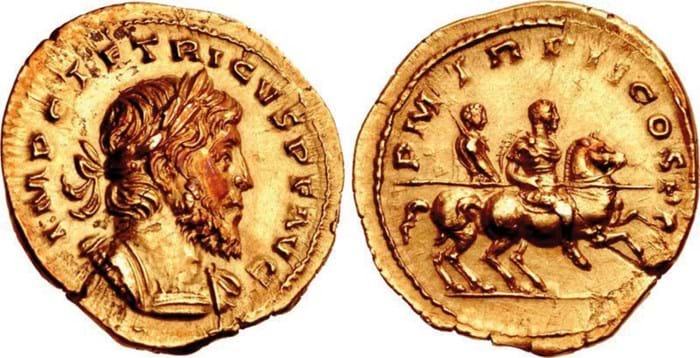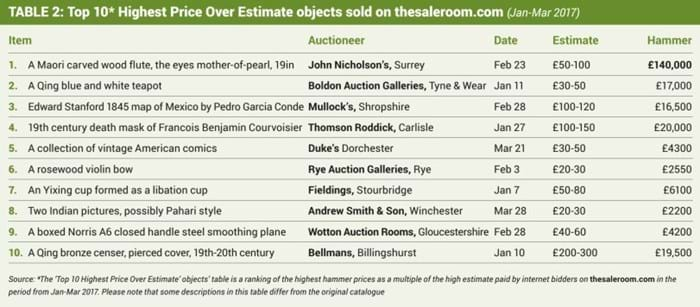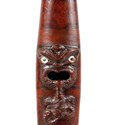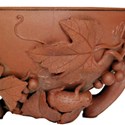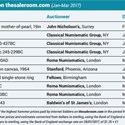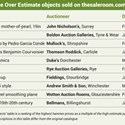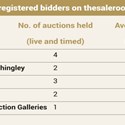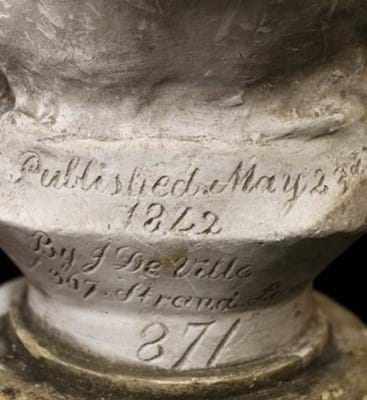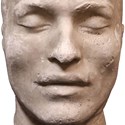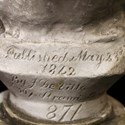House clearances remain a vital supply line for salerooms.
And for vendors and auctioneers alike, such clearances can generate a gamut of emotions – from disappointment and delight through to shock and occasionally, even horror.
Steven Parkinson, auctioneer and valuer at Thomson Roddick, experienced the full range when, on valuing the contents of a rural estate in 2016, he stumbled upon a table full of plaster-cast heads of executed criminals. “There they all were, all nine of them seemingly looking right at me,” he recalls.
Parkinson then faced the challenge of valuing these rare objects. This was despite an inscription to the base of one head indicating that the subject, Francois Benjamin Courvoisier, was noted for having inspired a William Makepeace Thackeray essay denouncing capital punishment.
Eventually valued at £100-150, Courvoisier’s mask sold for an astounding £20,000 in January on thesaleroom.com, ranking it fourth in the top 10 highest prices over estimate sold on the platform from January to March (see Table 2).
The high hammer price underscores the dilemma facing auctioneers in valuing the obscure. “The masks were an unknown quantity,” Parkinson says. “We looked at leading websites for similar objects and the estimate range was £200-300, so we stayed in that ballpark. Remember that valuations need to abide by auction law, in that we cannot inflate estimates that may mislead the market.”
As Thomson Roddick found, esoteric objects can be good news these days – and well-suited to the search engine.
This review of data from thesaleroom.com (a sister brand to ATG) covering the first quarter of 2017 suggests that – with traditional antiques not valued as highly as they once were – spectacular prices are more likely to be achieved for Asian or tribal objects.
It was another house clearance item that registered both the thesaleroom.com’s highest price and the highest price over estimate. Valued at £50-100, bidding for a Maori flute at John Nicholson’s sale in February started at £3200 and only stopped at £140,000. It sold to a dealer in France.
Auctioneer John Nicholson stands by the original low estimate.
“Although it was not clear initially what we had, we were well aware of its significance before the sale,” he says. “We already had a substantial commission bid on the books, so it wasn’t really a sleeper in the classic sense.”
Confidence boost
Our tables show that certain collecting categories are being auctioned online with increasing confidence.
One such is numismatics, an ancient market with cataloguing language and imagery perfectly suited to the digital screen.
For David Guest of Classical Numismatic Group, it was no surprise that the firm sold a Tetricus I aureus for $120,000 to an online buyer in January (Table 1).
US and UK-based CNG hosts most of its sales online, Guest says, and he notes the growth in the number of coins selling at $50,000 and above, to internet bidders.
“Buyer confidence in online is growing, thanks to a combination of increased familiarity with online platforms, improvements in technology, the anonymity offered by internet bidding and trust in the auction house’s descriptions and images.”
The coin sold at CNG’s flagship two-day Triton sale in January, a peak time for the numismatic market in New York, explaining the high volume of coins in the top 10.


